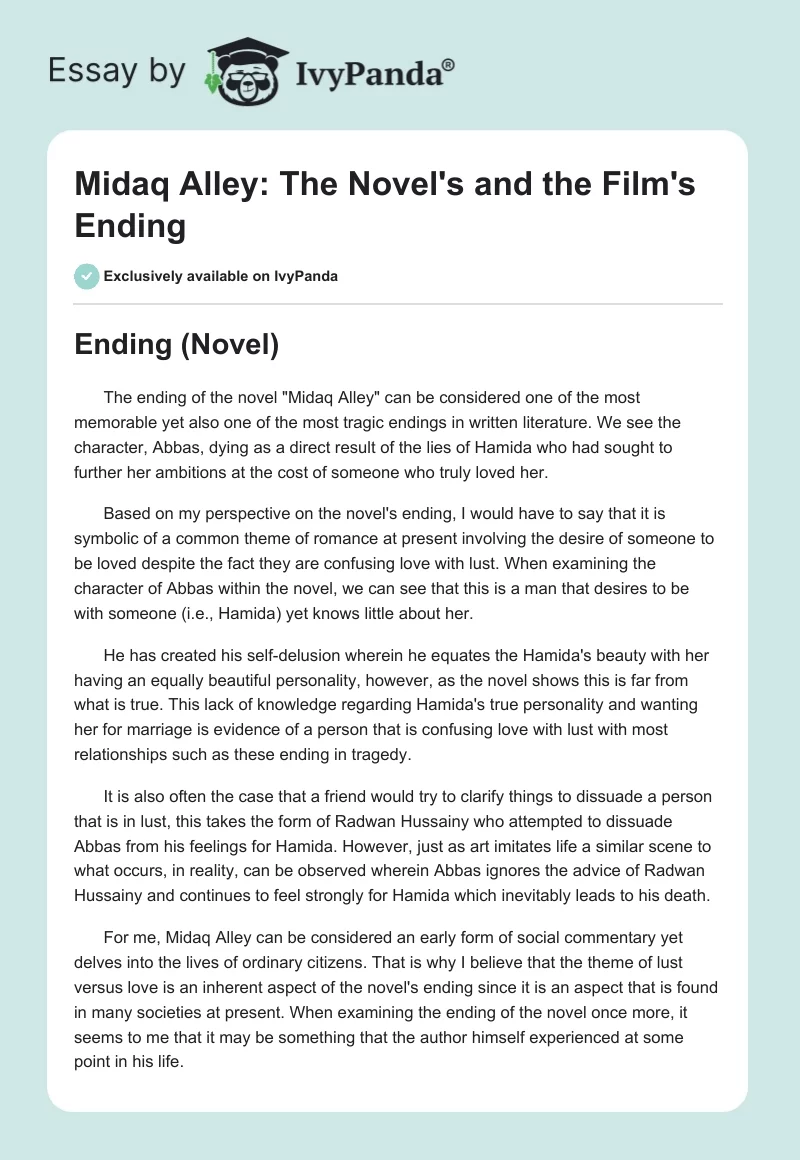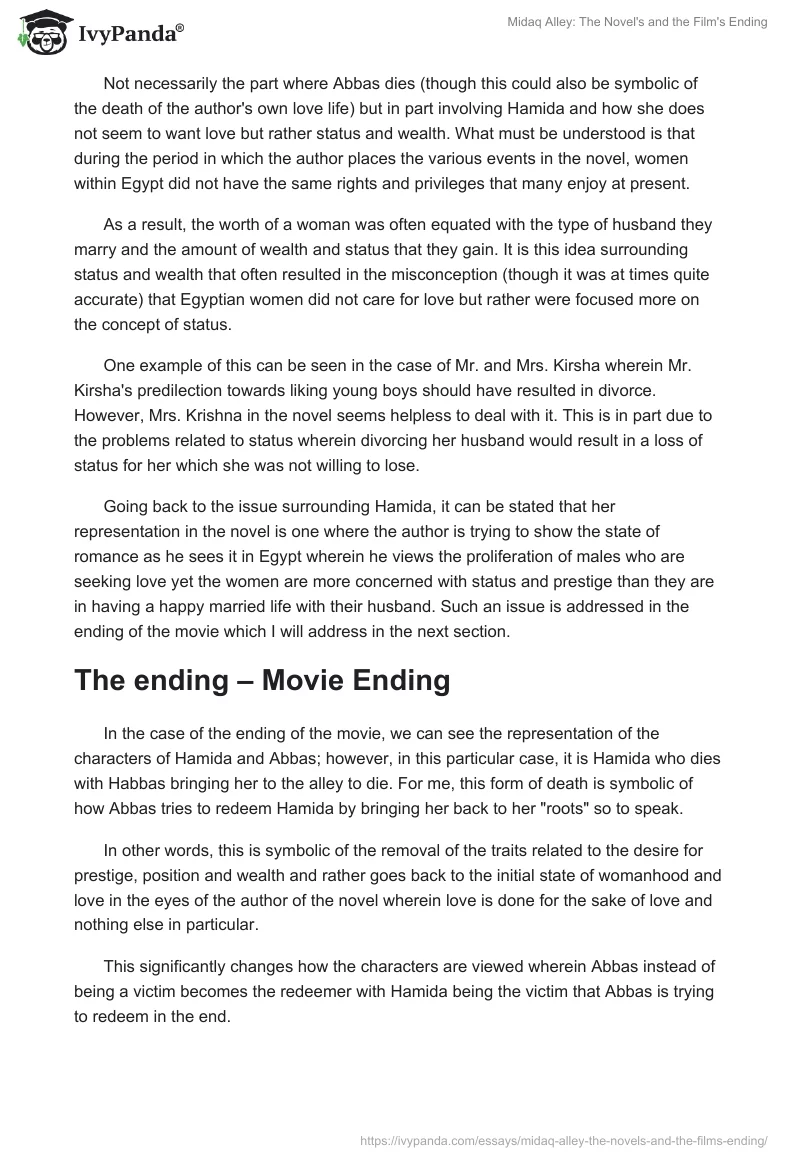Ending (Novel)
The ending of the novel “Midaq Alley” can be considered one of the most memorable yet also one of the most tragic endings in written literature. We see the character, Abbas, dying as a direct result of the lies of Hamida who had sought to further her ambitions at the cost of someone who truly loved her.
Based on my perspective on the novel’s ending, I would have to say that it is symbolic of a common theme of romance at present involving the desire of someone to be loved despite the fact they are confusing love with lust. When examining the character of Abbas within the novel, we can see that this is a man that desires to be with someone (i.e., Hamida) yet knows little about her.
He has created his self-delusion wherein he equates the Hamida’s beauty with her having an equally beautiful personality, however, as the novel shows this is far from what is true. This lack of knowledge regarding Hamida’s true personality and wanting her for marriage is evidence of a person that is confusing love with lust with most relationships such as these ending in tragedy.
It is also often the case that a friend would try to clarify things to dissuade a person that is in lust, this takes the form of Radwan Hussainy who attempted to dissuade Abbas from his feelings for Hamida. However, just as art imitates life a similar scene to what occurs, in reality, can be observed wherein Abbas ignores the advice of Radwan Hussainy and continues to feel strongly for Hamida which inevitably leads to his death.
For me, Midaq Alley can be considered an early form of social commentary yet delves into the lives of ordinary citizens. That is why I believe that the theme of lust versus love is an inherent aspect of the novel’s ending since it is an aspect that is found in many societies at present. When examining the ending of the novel once more, it seems to me that it may be something that the author himself experienced at some point in his life.
Not necessarily the part where Abbas dies (though this could also be symbolic of the death of the author’s own love life) but in part involving Hamida and how she does not seem to want love but rather status and wealth. What must be understood is that during the period in which the author places the various events in the novel, women within Egypt did not have the same rights and privileges that many enjoy at present.
As a result, the worth of a woman was often equated with the type of husband they marry and the amount of wealth and status that they gain. It is this idea surrounding status and wealth that often resulted in the misconception (though it was at times quite accurate) that Egyptian women did not care for love but rather were focused more on the concept of status.
One example of this can be seen in the case of Mr. and Mrs. Kirsha wherein Mr. Kirsha’s predilection towards liking young boys should have resulted in divorce. However, Mrs. Krishna in the novel seems helpless to deal with it. This is in part due to the problems related to status wherein divorcing her husband would result in a loss of status for her which she was not willing to lose.
Going back to the issue surrounding Hamida, it can be stated that her representation in the novel is one where the author is trying to show the state of romance as he sees it in Egypt wherein he views the proliferation of males who are seeking love yet the women are more concerned with status and prestige than they are in having a happy married life with their husband. Such an issue is addressed in the ending of the movie which I will address in the next section.
The ending – Movie Ending
In the case of the ending of the movie, we can see the representation of the characters of Hamida and Abbas; however, in this particular case, it is Hamida who dies with Habbas bringing her to the alley to die. For me, this form of death is symbolic of how Abbas tries to redeem Hamida by bringing her back to her “roots” so to speak.
In other words, this is symbolic of the removal of the traits related to the desire for prestige, position and wealth and rather goes back to the initial state of womanhood and love in the eyes of the author of the novel wherein love is done for the sake of love and nothing else in particular.
This significantly changes how the characters are viewed wherein Abbas instead of being a victim becomes the redeemer with Hamida being the victim that Abbas is trying to redeem in the end.


